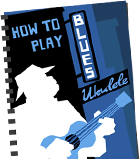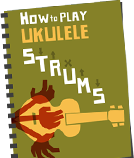Early contender for next year’s Ukulele Video of the Year from Anne Janelle with some beardo on ukulele. Still plenty of time to cast your vote for the 2013 video of the year.
Don’t forget to cast your vote for Ukulele Video of the Year. Currently Jontom is in the lead with Walk off the Earth second.
It’s not often you see an interesting, well written piece about ukuleles in the mainstream media so Vulture’s article In Defense of the Ukulele is very welcome. It’s a follow up to an interview with Cristin Milioti (the ukulele-playing mother of How I Met Your Mother) and the anti-uke hate she provoked.. It makes some thought provoking points about ukulele and gender-shaming.
Bill to make the ukulele the state instrument of Hawaii. But it does have some competition from the ipu (which has a better claim in my opinion).
The Ukulele Is Not The Happiest Instrument In The World…Rant!
Team ukulele has been out in force at the Olympics with Julia Mancuso winning bronze in the alpine skiing super combined and luger Kate Hansen causing delight and disapproval with her warmup routine.
Pictures
– Amy Crehore’s Twitch uke is approaching completion.
– Bird ukulele
– AFP chord chart art
– Ukulele Joe Thomas
– Uke diagrams
Videos
– Automatic strummer
– The woes of having a cat that isn’t weird enough to make internet money (via thingsisawthatilove).
We Shall Overcome (Instrumental Tab)
I couldn’t let Pete Seeger week pass without writing up this song in some form. In the spirit of the song I’ve kept the arrangement super simple. I go through the verse three times. Getting more strident each time.
First Time Through
I’m just playing the melody. Picking it out with my thumb.
Second Time Through
Harmonising the melody. I’m picking this with my thumb on the lower string and index finger on the higher string.
Third Time Through
Playing the melody back with the chords. I’m just using my thumb here. Strumming up to the melody note.
Links
The nominations are i, they’ve been fed through a highly complex algorithm and a final list of candidates has been spat out. Now it’s time to vote for you favourite. If you’re reading by email or feed reader and can’t see the voting doodle click here to be taken to be taken to the blog.
Rules
– Voting closes at midnight at the end of 23rd February.
– You only get one vote.
– Even if you already know who you’re voting for check out the other videos.
– Use whatever criteria you want. I’ll be voting for the one I like the most. (Who wins isn’t as important as getting some exposure for excellent videos)
Voting Closed
Here are the results:
Sanford and Friends: 476 votes 41%
Jontom – Born to Run: 408 votes 35%
Walk off the Earth – Royals: 163 votes 14%
Elof & Wamberg – Øresundreel: 37 votes 3%
Little Miss Higgins – Early Morning Thief: 28 votes 2%
James Clem – Big River: 27 2%
Sarah Humphreys – Why Don’t We Just Stay Home: 15 votes 1%
Dingus Khan – Knifey Spooney: 8 votes 1%
Moselele – Do They Know It’s Christmas: 3 votes 0%
The Contenders
Sanford and Adrien Sala and Tesia Rhind – As the Living Do
Elof & Wamberg – Øresundreel
Little Miss Higgins – Early Morning Thief
Moselele – Do They Know It’s Christmas
Walk off the Earth – Royals
Jontom – Born to Run
Sarah Humphreys – Why Don’t We Just Stay Home
James Clem – Big River
Dingus Khan – Knifey Spooney
When I heard about the death of Pete Seeger I knew I’d have to dedicate a week to him. He was a massively important figure in music and important in a way you don’t see very often. As a musical middleman.
None of the Seeger pieces I’m featuring are entirely his own work (even Turn, Turn, Turn takes its lyrics from Ecclesiastes). And Seeger’s versions of these songs aren’t the best known (or necessarily the best versions). But he had an amazing knack for taking songs from across the globe that had been overlooked and presenting them in such a compelling and accessible way that they were begging for others to take the song and run with it.
He was also unusual in how strongly he knitted music and politics together. And he did it so effectively he was dragged before the House Un-American Activities Committee to answer for such Un-American activities as singing at the “May Day Rally: For Peace, Security and Democracy.” How many musicians today could you imagine being called before government for their political opinions?
But if you still care about making your voice heard today is the EFF’s The Day We Fight Back campaign protesting against mass surveillance. Head to TheDayWeFightBack.org to join the campaign.
Pete Seeger Chords
The Tokens – The Lion Sleeps Tonight
Walk off the Earth – Little Boxes
The Weavers – Pay Me My Money Down
Pete Seeger – Turn, Turn Turn
Coming up: tab for an instrumental version of We Shall Overcome.
The Tokens – The Lion Sleeps Tonight (Chords)
This song has a tortured and unpleasant history. There’s an overview of the song’s history here (including a link to the brilliant Rolling Stone article by Rian Malan on the subject).
The short version: The song Mbube was written and performed by South African Solomon Linda in 1939. Folk song collector, Alan Lomax heard the song and suggested it to Pete Seeger. Pete Seeger adapted it under the misheard name Wimoweh with none of the royalties going to Linda. That was adapted again for the startling song The Lion Sleeps Tonight with none of the royalties going to Linda. Most profitably it was using by Disney in The Lion King without any royalties going to Linda’s family. Initially. After legal wrangles the family eventually got some money. But not before Solomon Linda died in poverty and his youngest daughter contracted AIDS and died, unable to afford retroviral drugs.
But despite its disheartening back-story the song has produced three incredible records (it’s the Disney one I don’t think is up to much).
Suggested Strumming
For the strum start of like this:
d u x u d u x
Then change to the next chord for the final upstrum and play the pattern again:
u d u x u d u x
And keep repeating that.
Which sounds like this:
If you prefer you can replace the chnk with a strong down strum.
Links
Buy Solomon Linda’s Mbube
Buy Pete Seeger’s Wimoweh
Buy The Tokens’ The Lion Sleeps Tonight
More Pete Seeger chords
Pete Seeger – Turn, Turn, Turn (Chords)
Here’s a song Pete Seeger wrote himself (with a bit of help from Ecclesiastes) in the 1950s. But it became a huge hit when The Byrds covered it in the 60s.
It’s just three chords so not hard to bust out during those many times when you’re gathering stones together.
Suggested Strumming
You can use this as the main pattern:
d – d u
In the chorus: Once for each chord in the first two lines. Then four times for each chord on the last line.
In the verse: Twice for each chord.
Twiddly Bits
In the chorus it sounds good if you replace the first down strum with plucking the C-string.
For example for the Bb you pluck the C-string, second fret then strum twice. Because you stay on the F chord for two goes round I like to pick the E-string the second time.
All together it sounds like this:
Links
The Weavers – Pay Me My Money Down (Chords)
This slave work-song was adapted up by Pete Seeger during his time with The Weavers. It was later picked up by the Kingston Trio and was the standout track on Bruce Springsteen’s The Seeger Sessions.
It’s just two chords all the way through so dead easy.
Suggested Strumming
You can use this as the main pattern:
d – d u d u d u
In the verse, chorus and solo: On the first line play it three times on D and once on the A. Then vice versa (three A, one D) on the second. Here’s how that sounds:
The one tricky bit is the intro. The timing is a bit strange. It’s like the verses but with a extra bar of 2/4. Which may have been a mistake. Anyway, I’d recommend getting rid of it for your version.
Twiddly Bits
Pay Me My Money Down Solo (Tab)
The second solo works really well on ukulele. Here’s a quick tab of that.
Links
Some of these videos – like the James Hill and Elof and Wamberg – are eligible for Ukulele Video of the Year. So if you see something you like there’s plenty of time to make you nominations.
Don’t forget to make you nominations for Ukulele Video of the Year.
New Releases
– Harpy Things EP by Des Wong – The first record I know of using a harp ukulele as its primary instrument. And he did an amazing job with it
– The Castaways new CD Miniature Horses. You can buy it on CDBaby
– Square Meter from Kara Square and Piero Peluche
Kickstarting
– James Hill is raising money for his new album Kickstarter-style.
Tabs
– The Kamiki Ukulele Method tabs
– Collection Of Old Tunes For Ukulele by Michael Madden
– Leftover Cuties ukulele chord book
Pictures
– Glass ukulele
– Electric ukulele girl
– Postman Pat is putting the share sell-off money to good use.
– Strange goings on
– Totoro Ukulele
Videos
– Tune up with U and 900
– 25 hour long ukulele session
– Apparently sales of ukuleles have been skyrocketing
– Epic ukulele headstand


